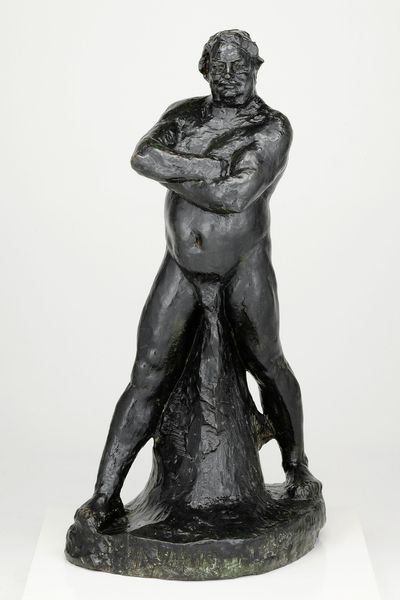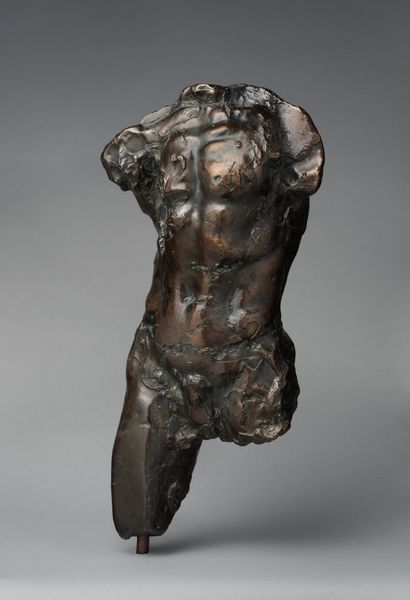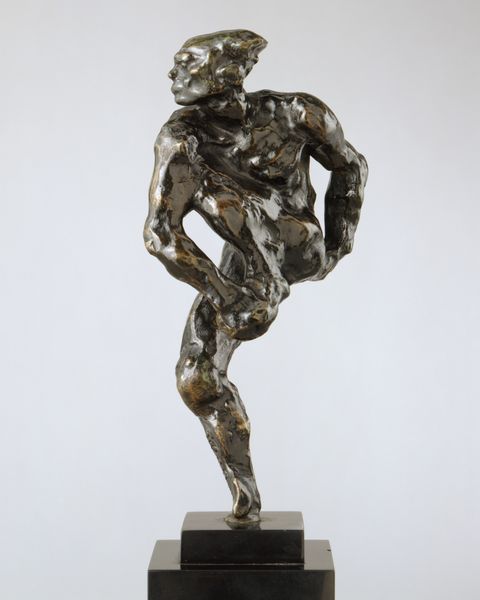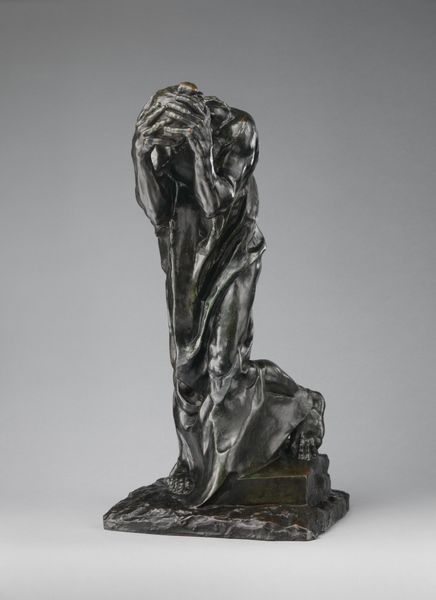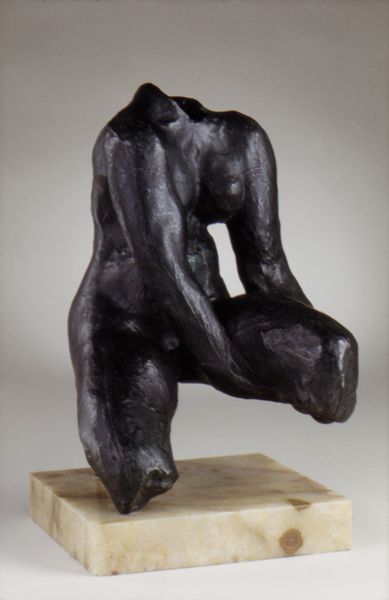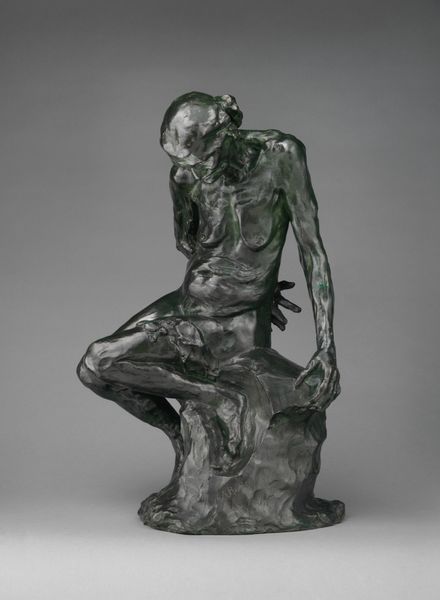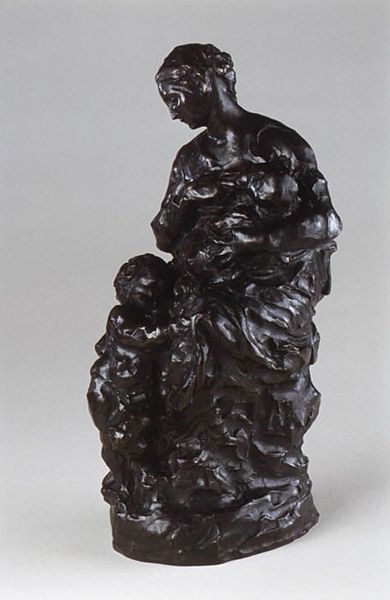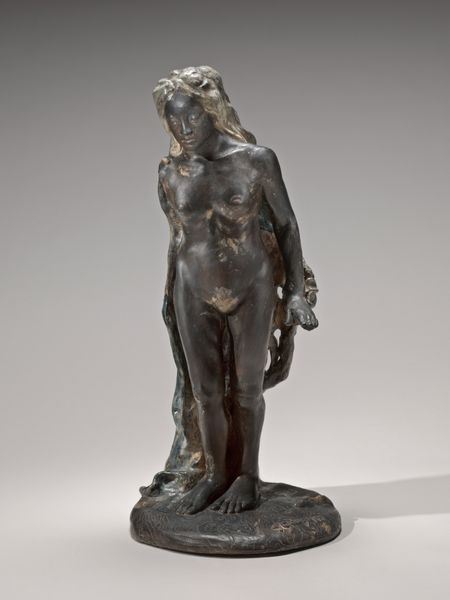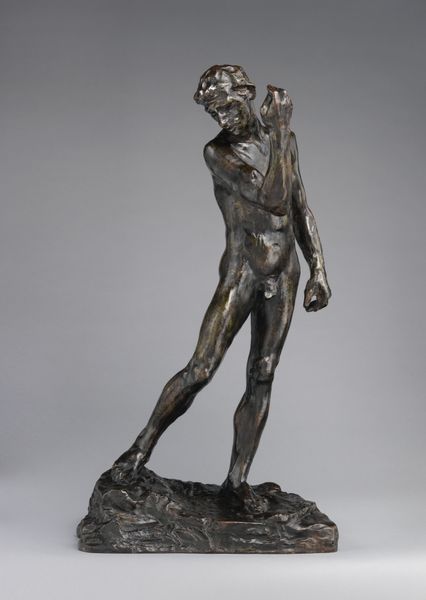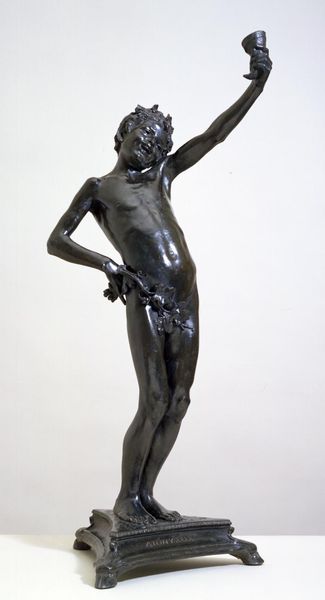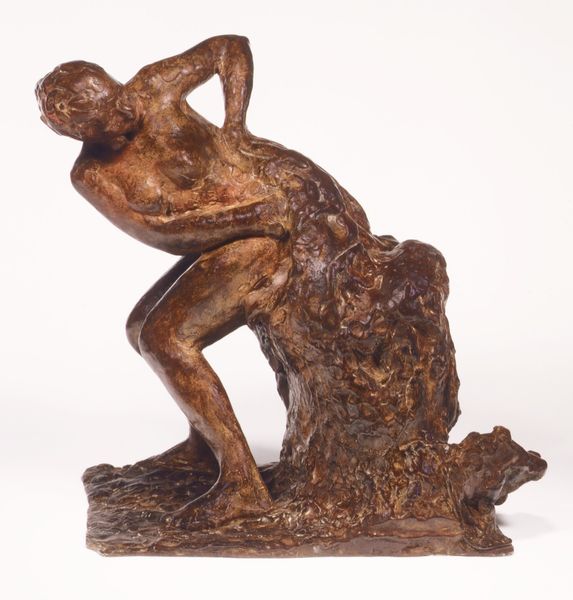
Copyright: Public domain
Curator: Before us stands Camille Claudel's "Young Girl with a Sheaf," rendered in bronze around 1890. There’s a vulnerability to it. What's your initial response? Editor: There's a tangible sense of gravity here, not just in the physical presence of the bronze but also in the downturned gaze and slumped posture of the figure. Curator: The piece raises significant questions about the role of women in art during that period. As a sculpture created by a woman, does "Young Girl with a Sheaf" resist or comply with prevailing patriarchal notions regarding feminine modesty and representations of the female nude? Editor: From a formal perspective, the composition is striking: the texture of the hair and sheaf creates a compelling contrast with the smoother surfaces of her body. Curator: Indeed. But it’s crucial to understand the cultural context. The male gaze dictated the reception of the nude female form. Claudel, by centering this young woman’s subjective experience – the inward reflection rather than outward presentation for desire–- arguably disrupts that gaze. Editor: Perhaps, but even with the downcast eyes, the anatomical detail focuses attention on form itself. It draws the viewer into considering the sculpture's structural qualities—the distribution of mass and space and how that generates a response in the eye. Curator: That response also must be historicized! Claudel challenges us to reconsider whose bodies are granted artistic representation and under what terms. The labor this woman clearly undertakes is visible even in her stance; she becomes more than just a body, no longer silent, and she's no one's object. Editor: Regardless of the intentions behind its creation, this bronze provokes a powerful study in lines, form, and balance, demonstrating Claudel's undeniable skill with sculpting materials. Curator: By interpreting artworks as cultural texts deeply intertwined with social dynamics, we illuminate the nuanced and conflicted gendered experiences of Claudel's time. Editor: Approaching from my angle offers insight into the formal excellence within the art object itself, enhancing appreciation of how Claudel employed semiotic and structural principles to produce work with great visual strength.
Comments
No comments
Be the first to comment and join the conversation on the ultimate creative platform.
